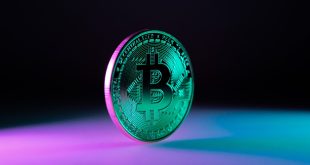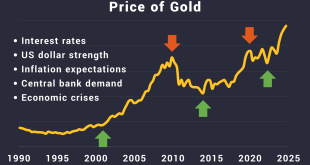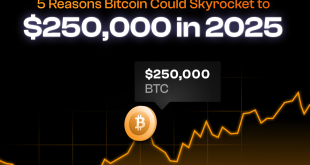Chris Blasi, a well-known figure in the precious metals market, remains optimistic about gold’s potential for significant gains. His analysis consistently points towards a “basic price factor” that suggests current gold prices are undervalued and poised for a substantial upward movement. This article will delve into Blasi’s core arguments, examine the underlying “basic price factor,” and explore the catalysts that could trigger this anticipated surge in gold’s value.
Understanding Chris Blasi’s Perspective on Gold
Have you ever wondered if you’re missing out on a golden opportunity? (pun intended!) Well, Chris Blasi certainly thinks so when it comes to gold. He’s a big name in precious metals, and he believes gold is ready for a serious climb. His views are pretty interesting, especially when you consider the current economic climate. But who is Chris Blasi, and why should we even care what he thinks about gold? Let’s dive in and take a closer look, shall we?
Blasi’s Background and Expertise
Okay, so, Chris Blasi isn’t just some guy shouting opinions from a street corner. He’s the President and co-founder of Neptune Global Holdings, a company focusing on precious metals. He’s been around the block a few times, analyzing markets and advising clients on investment strategies. This isn’t his first rodeo, so to speak. He’s got the experience and the track record to back up his viewpoints, which, frankly, makes them a little more compelling, don’t you think?
Key Tenets of His Investment Philosophy
Blasi’s philosophy isn’t based on whims or gut feelings; it’s rooted in a few core principles. He’s big on understanding intrinsic value and long-term trends. He doesn’t get caught up in the daily noise, the fleeting headlines. Blasi is more interested in the fundamental drivers that impact gold’s price over time. He believes in gold as a hedge against uncertainty and a store of value in a world that often feels, well, a bit unstable. So, his approach is very much grounded in the fundamentals.
The “Basic Price Factor” Explained
Now, this is where it gets interesting – the “basic price factor.” This is Blasi’s key argument, the foundation of his bullish outlook on gold. It’s not some secret formula he scribbled on a napkin (at least, I don’t think so!), but a way to gauge gold’s true worth relative to various economic indicators. So, what exactly is this “basic price factor,” and why should you, or anyone, even bother paying attention to it?
Defining the “Basic Price Factor” Concept
The “basic price factor,” as Blasi explains it, is essentially a way to determine if gold is overvalued or undervalued based on a range of economic metrics. It’s not just about supply and demand; it considers things like inflation, interest rates, geopolitical risks, and currency fluctuations. It’s kind of like a holistic health check for gold’s price. It’s a way to cut through all the noise and see what’s really going on, you know?
Factors Influencing the Basic Price Factor
So what exactly feeds into this “basic price factor” stew? Well, you’ve got inflation, which eats away at the value of your dollars (making gold, a tangible asset, look more appealing). Then there are interest rates; low rates tend to boost gold prices because they make holding non-yielding assets more attractive. And let’s not forget geopolitical turmoil – when the world feels shaky, people flock to gold as a safe haven. Currency devaluation also plays a role – if a currency weakens, gold, priced in that currency, can become more expensive. It’s a complex web, but Blasi argues that these factors, when considered together, paint a clearer picture of gold’s true value.
Historical Accuracy of the Basic Price Factor
Here’s the million-dollar question: has this “basic price factor” actually worked in the past? Blasi points to instances where his analysis, based on this factor, correctly predicted shifts in gold prices. He argues that it’s not foolproof, of course (no crystal ball is!), but it’s provided a reliable framework for understanding gold’s potential. It’s kind of like using weather patterns to predict the likelihood of rain – you might not be right every single time, but you’ll be right more often than guessing randomly.
Potential Catalysts for Gold’s Price Increase
Okay, so let’s say Blasi is right, and gold is undervalued. What could actually make it go up? What are the potential triggers that could unleash this pent-up potential? Well, buckle up, because there are a few key things to watch out for. Think of them as the ingredients in a gold-boosting recipe.
Inflationary Pressures and Gold
Inflation. It’s that word that makes everyone cringe, right? But for gold, it’s often a tailwind. As prices for everyday goods and services rise, people start looking for ways to protect their purchasing power. Gold, with its history as a store of value, often becomes a popular choice. So, if inflation remains stubbornly high (and many economists think it will), that could be a major catalyst for gold’s ascent. In simple terms, when your dollar buys less, gold tends to shine brighter.
Geopolitical Instability and Safe-Haven Demand
Sadly, the world doesn’t always feel like a peaceful place, does it? And when geopolitical tensions flare up – wars, political instability, trade disputes – people tend to get nervous. They start looking for safe havens, assets that can weather the storm. And gold, historically, has been the safe-haven asset. So, heightened geopolitical risks could drive significant demand for gold, pushing its price higher. Think of it as an insurance policy against global chaos.
Monetary Policy and Its Impact on Gold
Central banks, with their interest rate decisions and quantitative easing programs, wield a lot of power over the economy – and over gold prices. Generally, lower interest rates and easy monetary policy tend to be good for gold, as they make holding the metal more attractive compared to interest-bearing assets. Conversely, higher rates and tighter policy can put downward pressure on gold. So, keep a close eye on what the Federal Reserve and other central banks are doing; their actions can have a big impact on gold’s trajectory.
Risks and Considerations
Now, before you go rushing out to buy all the gold you can find, let’s pump the brakes for a second. Investing always involves risks, and gold is no exception. It’s important to consider the potential downsides and alternative investment options before making any decisions. Don’t just blindly follow the hype, okay?
Factors that Could Hinder Gold’s Gains
What could stop gold from reaching its peak? Well, a few things. A strong dollar, for one, can make gold less attractive to international buyers. Unexpectedly high interest rates could also dampen demand. And if geopolitical tensions ease, the safe-haven appeal of gold might diminish. It’s not always smooth sailing, so it’s good to be prepared. In the financial world, there are never any guarantees.
Alternative Investment Options
Gold isn’t the only game in town, right? There are plenty of other ways to invest your money. Stocks, bonds, real estate, even cryptocurrency – each has its own potential risks and rewards. It’s important to consider your own risk tolerance, investment goals, and time horizon before choosing where to put your money. Don’t put all your eggs in one basket, as they say.
So, is gold really about to skyrocket? Well, Chris Blasi certainly thinks so, based on his “basic price factor” analysis. He sees undervalued prices and potential catalysts like inflation, geopolitical instability, and monetary policy shifts lining up to create a perfect storm for gold. Of course, there are risks to consider, and gold isn’t the only investment option out there. Ultimately, the decision of whether or not to invest in gold is a personal one. But it’s definitely worth considering Blasi’s arguments and doing your own research. Who knows, maybe you’ll find your own little pot of gold at the end of the rainbow, or at least make an informed investment decision! Maybe it’s time to dust off those investment books and get to studying!
 seeme
seeme



